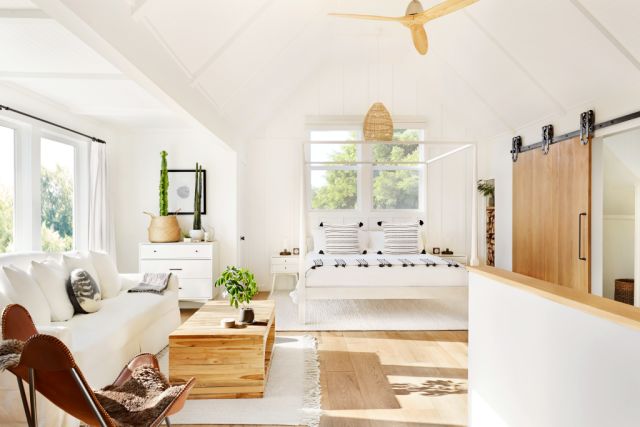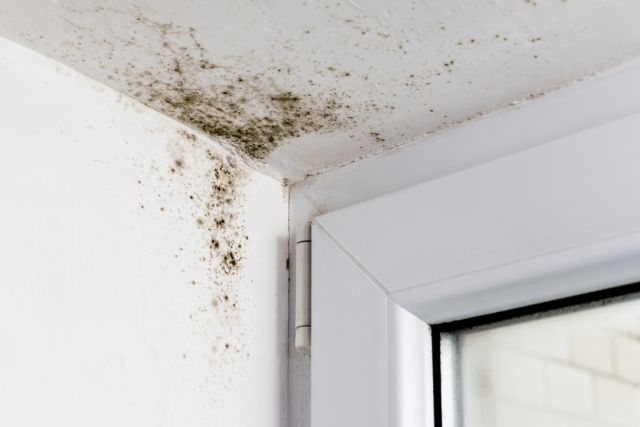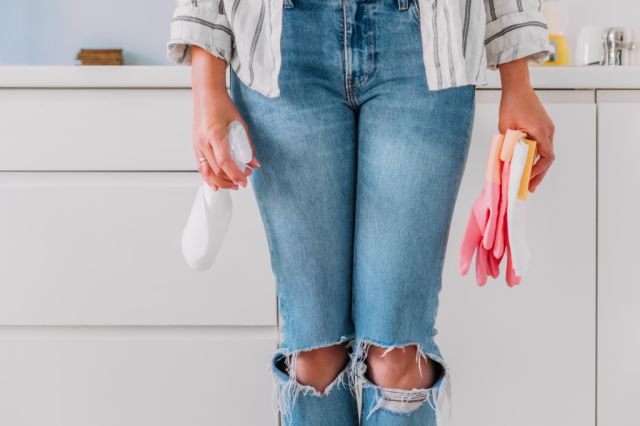How to do a health check on your home…
You know what makes, and keeps, yourself healthy, but how about your home? Your environment can play a major role in determining how well, hale and hearty you are, the experts say, so it’s critical you pay attention to what’s around you.
Keep your home in top shape
Inspect your house or apartment regularly and keep on top of any maintenance issues. When jobs around the home are neglected, problems are likely to grow.
Clean filters regularly, make sure heaters are serviced, check exhaust fans and replace appliances that are damaged or aren’t working effectively.
Let fresh air in
It’s important to keep a home well ventilated by opening windows or doors from time to time, says Professor Geoff Hanmer, of the faculty of the built environment at the University of Technology Sydney.

Many older houses have vents high up on walls to keep homes aired but some newer homes are more sealed-up and draught-proof. “Then it becomes even more important to open up the home,” he says. “But if it’s too cold, then you need to filter the air to make sure it’s safe.
“That’s when HEPA [high-efficiency particulate absorbing] type air purifiers come into their own, but they will only be good for a certain square metreage of space; a small HEPA filter in a big house won’t make too much difference. You also need to be aware of off-gassing from some materials that produce pollutants in the home, like granite benchtops that may give off a limited amount of radon.”
If you’re giving walls a new coat of paint or varnishing wood, for example, or are bringing new furniture or floor coverings into the home, make doubly sure you’re getting plenty of fresh air to make up for the airborne release of chemicals from them.
Avoid mould
You also have to allow your home to breathe in order to avoid problems like mould. “Your house is something of a living organism with natural fibres like timber that absorb moisture,” says Gerard Murtagh of mould removalists Mould Men. “So you want to make sure it doesn’t retain too much by allowing plenty of air and sunshine through..
“The first thing you should do to check if all’s well is a smell test. When bacteria and mould grow they’ll have some level of odour, so you’ll know to act to make sure the problem doesn’t get worse. If you see mould on something, take action as soon as possible; don’t leave it. Mould can grow very quickly if it’s left untreated and can go through a whole house in as little as a wet weekend.”

Get rid of damp
Make sure there aren’t any leaks into your home from the roof, drainage or plumbing and clean up quickly after any flooding. If your home is still damp and at risk of mould as a result, consider investing in a dehumidifier, recommends Brent Clark, chief executive of Wattblock, a company that helps strata clients improve energy efficiency.
Get the best property news and advice delivered straight to your inbox.
Become a member
Check out our Privacy policy.
“You can buy a gadget that measures humidity in an apartment, and you can connect it to a mobile phone app to make it very easy to use,” he says. “So if it’s rainy overnight, it might bring the humidity in your home down from, say, 67 per cent to 40 per cent.”
He also recommends the fitting of smart switches in bathrooms and laundries to keep ventilation fans going for a couple of minutes after being turned off.
Clean, clean, clean
It’s important to clean the home regularly to keep all its occupants healthy, Murtagh says. Bacteria like mould can feed off dirt, dust, sloughed-off skin cells, hair, bugs, dust mites, clothing particles and pollen.
Vacuum, dust, wipe down and mop at least weekly, empty bins as quickly as necessary, then have a thorough spring clean once a year – or more often – moving couches or bed heads away from walls and cleaning underneath where dirt can easily become trapped.

“Many people clean the surfaces they can see, but there can be build-ups of dust and grime where it’s not so obvious,” Murtagh says. “That can help make your house unhealthy.”
Consider introducing a no-shoe policy to stop boots and shoes from bringing in all sorts of nasties from the outdoors that you don’t want to be spread indoors.
Be ready for crises
Install smoke detectors and check them regularly to make sure the batteries are still functioning, and always have a fire extinguisher close at hand in the kitchen or in the garage.
Leaks from gas cooktops, ovens or heaters can also be dangerous, with symptoms of gas poisoning including headaches, dizziness, fatigue and nausea. Always make sure there’s some fresh air getting into a room when you have gas appliances on.
“We feel that electric makes better environmental sense than gas, and even better than an electric heater is to run reverse-cycle air-conditioning, which runs on heat pump technology,” Clark says. “That is the healthiest as it has filters, and the lowest cost.”

Keep your home pest-free
Creepy-crawlies can spread disease and sickness and, while it’s sometimes very hard to keep them all at bay, especially if the house or apartment block is older and built on sand, it’s good to try to keep their numbers in check.
Make sure cracks and fissures in walls and the floor are sealed to stop them coming in, and keep all food in the fridge or stored in airtight containers in the pantry and off surfaces. Cockroach bombs can be helpful for bad infestations, with baits and sticky traps also useful. For problems with mice, rats, bats and larger critters, it may be necessary to call in the professionals.
Get rid of toxic chemicals
Strong chemicals in the home, like mould killers, can affect people with asthma or auto-immune diseases, Clark says. “Choose more natural and biodegradable products for bathrooms and kitchens”.
Also introduce a few indoor plants, which are great for reducing carbon dioxide and releasing oxygen, and can promote a more restful, green feel.

